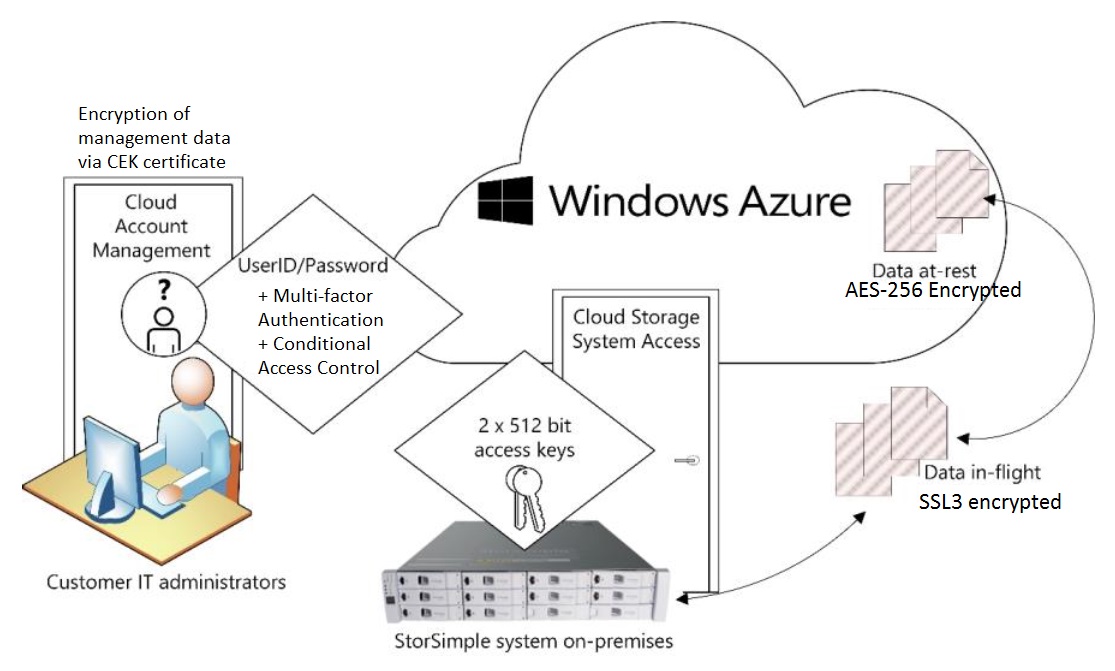Azure, Storage, and StorSimple
Azure is Microsoft’s public cloud offering. Microsoft provides data storage as one of the services in Azure. Azure storage provides an attractive option for organizations who wish to leverage cloud scalability, flexibility, security, and cost savings. A single Azure subscription provides up to 100 standard storage accounts, each has a capacity of 500 TB. Such vast capacity makes petabytes of data storage available on a moment’s notice.
Azure StorSimple is an on-premises iSCSI SAN provided by Microsoft to easily bridge the gap between on-premises and Azure storage. With a very small on-premises footprint (2-4 standard rack units), it provides 200-500 TB of storage available to on-premises users and applications. StorSimple features automated tiering between its SSD, SAS, and Azure tiers. It automatically tiers the oldest blocks from the SSD down to the SAS tier as it fills up. Similarly, it automatically tiers the oldest blocks from the SAS tier to the Azure tier as it fill up with data. All metadata resides on-premises for fast file browsing and access.
Healthcare adoption and common use cases
StorSimple is purpose built as a storage target for primary unstructured data sets, such as file shares and home directories. In healthcare we’ve seen several popular adoptions of Azure storage using StorSimple particularly with PACS and sleep study systems. PACS (picture archiving and communication system) is a healthcare technology for the short and long term storage, retrieval, management, distribution and presentation of medical images. In an average hospital such applications often generate several terabytes of data every month. A typical PACS workload presents several storage challenges that can be hard to meet with traditional on-premises storage, in terms of capacity planning, and long term retention requirements. StorSimple makes the vast inexpensive Azure storage provides an attractive solution for these use cases.
Data encryption and security

In a typical StorSimple deployment, we configure the following security features:
Azure HIPAA compliance
Microsoft’ Azure HIPAA/HITECH Act Implementation Guidance lists Storage and StorSimple in the scope of Azure services under the its HIPPA BAA (Business Associate Agreement). Microsoft includes execution of the HIPAA BAA as part of a customer’s volume licensing agreement. Microsoft Azure services are audited by independent external auditors under industry standards, including ISO 27001. Microsoft Azure ISO 27001 audit scope includes controls that address HIPAA security practices as recommended by the U.S. Department of Health and Human
Services. This link provides additional information on security, privacy, and compliance certifications.
For more information on taking advantage of inexpensive, secure, vast Azure Storage for healthcare systems, contact our Azure Consulting team.